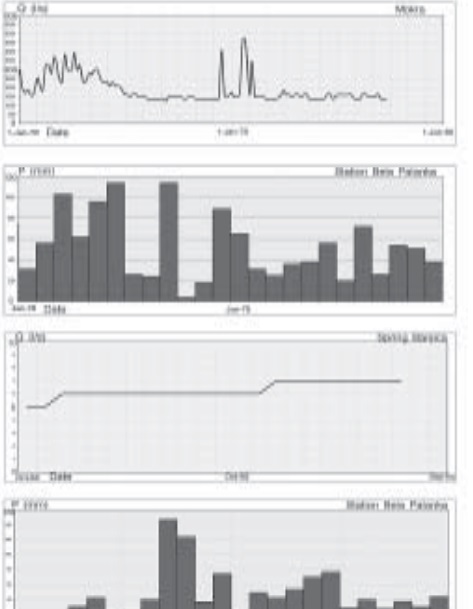Propagation of a Floodwave in Karst during Artificially Generated Recession - Case Study of Banjica Spring (Bela Palanka, Eastern Serbia)
DOI:
https://doi.org/10.3986/ac.v32i2.351Povzetek
V sklopu hidrogeoloških raziskav severovzhodnega vznožja Suve planine v Vzhodni Srbiji, je bila v bližini toplega izvira napravljena 100 m globoka vrtina. Dotok v vrtino je bil arteški, kar je povzročilo umetno recesijo v izviru Banjici. Tekom tega hidrodinamičnega poizkusa je bilo v zaledju izvira veliko padavin, ki so povzročile poplavni val. Na terenu je mogoče jasno razločiti dva tipa krasa: ujeti in pokriti kras. Hidrogeološka reakcija na omenjeni poplavni val med umetno povzročeno recesijo dokazuje tudi obstoj globokega krasa. To je bilo mogoče odkriti s pomočjo primerjave hidrograma Banjice in krivulje pritiska v vrtini. Na ta način ni potrjen le obstoj krasa, ampak tudi njegove značilnosti (npr. velikost in tipi kraških prevodnikov, relativna starost, velikost in obseg vodonosnika, itd.).
During hydrogeological research in the area of the north-eastern foothills of Mt. Suva Planina in Eastern Serbia, a borehole of 100 m of depth was drilled in the vicinity of a lukewarm spring, Banjica. The borehole had an artesian discharge, which caused artificially generated recession in the adjoining spring Banjica. During this hydrodynamical test, great quantities of precipitation occured in the hinterland of the spring, having the effect of a floodwave. The presence of two types of karst is obvious in the field – confined karst and covered karst. The hydrogeological response to the floodwave during artificially generated recession proved the presence of deep-seated karst also. This can be detected by comparative analysis of the hydrograph of the Banjica spring and the graph of pressures in the borehole. In this way, not only the presence, but also the characteristics of the karst can be proved (e.g. dimensions and types of karst conduits, relative age of karst, size and extension of the aquifer, etc.).
Prenosi

Prenosi
Objavljeno
Kako citirati
Številka
Rubrike
Licenca
Avtorji jamčijo, da je delo njihova avtorska stvaritev, da v njem niso kršene avtorske pravice tretjih oseb ali kake druge pravice. V primeru zahtevkov tretjih oseb se avtorji zavezujejo, da bodo varovali interese založnika ter da bodo povrnili morebitno škodo.
Podrobneje v rubriki: Prispevki




